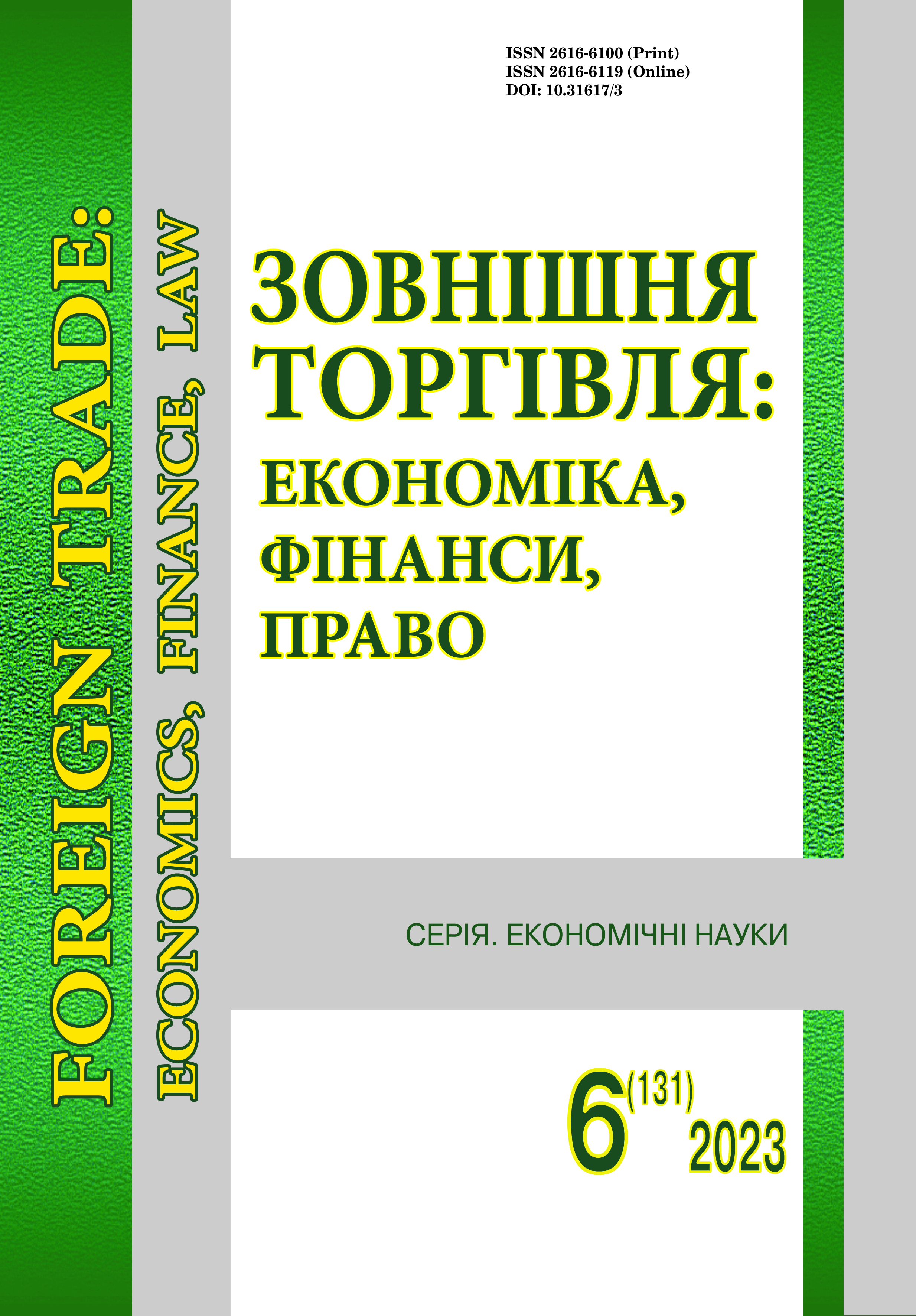Trends of digital transformation in the global economy
DOI:
https://doi.org/10.31617/3.2023(131)03Keywords:
digitalization, world economy, broadband, global Internet data traffic, digital platforms, artificial intelligence, Internet of Things.Abstract
The purpose of the article is to identify the trends of digitalization in the world economy and to study the differences between the regions of the world. The main hypotheses are: the rapid growth of the introduction and use of digital technologies; the increase of digital divide between countries by level of development. The research used the methods of system analysis, comparison, and multivariate statistical analysis. The results of the study indicate the following trends, in particular, the world economy depends on the Internet. The number of Internet users in the world increased by 4.2 times to 66.3 % of the world's population in 2005–2022. In this process poor countries lag behind rich countries by 3.5 times. Mobile broadband Internet is spreading rapidly in the world – its coverage has doubled over the last 8 years. Smartphones are a key tool for accessing wireless Internet, the cost of which limits digitalization in less developed countries. 4G network coverage dominates in all regions of the world, primarily in cities than in rural areas, although the least developed countries lag significantly behind. Developed countries often hand over leadership in Internet speed to a number of developing countries as they have managed to build new high-speed data transmission infrastructure. Developed countries are leading in all types of business Internet activities and e-government services. Asia is the leader in social media users and online job search, Africa – in software downloads. The Asia-Pacific region is the largest user of international Internet bandwidth. Digital platforms are rapidly developing and will be acquired by companies in various sectors. Rising share prices of leading digital platforms may signal an even greater gap between the digital and "real" economies. The market capitalization of Chinaʼs digital giants is lower than that of the US. Companies and countries where digital platforms are located are in a better position to lead in the field of artificial intelligence (AI), which is a key factor for future profits. The majority of AI researchers (59 %) work in the US, 11 % - in China. The US and China also dominate in the IoT segment. Data value chains are growing around the world. The meaning of the concept of national sovereignty in the global digital economy, measuring data flows, distinguishing raw data from digital products require further study.
References
Cory, N. (2020). Surveying the Damage: Why We Must Accurately Measure Cross-Border Data Flows and Digital Trade Barriers. Information Technology and Innovation Foundation, Washington, DC, 27 January. https://itif.org/publications/2020/01/27/surveying-damage-why-we-must-accuratelymeasure-cross-border-data-flows-and
Coyle, D. & Nguyen, D. (2019). Cloud Computing, Cross-Border Data Flows and New Challenges for Measurement in Economics. National Institute Eco¬nomic Review, 249(1), 30-38. https://doi.org/10.1177/002795011924900112
Fortune Bunisess Insights (2023). Internet of Thing Market. https://www.fortunebusinessinsights.com/industry-reports/internet-of-things-iot-market-100307
IOT Analytics (2023). State of IoT: Number of Connected IoT Devices Growing 16% to 16.7 Billion Globally. https://iot-analytics.com/number-connected-iot-devices
ITU Statistics (2023). https://www.itu.int/en/ITU-D/Statistics/Pages/stat/default.aspx
Marcopolo (2023). The Global AI Talent Tracker. https://macropolo.org/digital-projects/the-global-ai-talent-tracker
Mazaraki, A., Roskladka, A., & Ivanova, O. (2021). China's digital policy: system analysis and implemen¬tation prospects for Ukraine. Herald of KNUTE 3, 4-17. https://doi.org/10.31617/visnik.knute.2021(137)01
Mitchell, J., Ker, D., & Lesher, M. (2021). Measuring the Economic Value of Data. Going Digital Toolkit Note. No. 20. https://goingdigital.oecd.org/data/notes/No20_ToolkitNote_MeasuringtheValueofData.pdf
NTIA (2016). Measuring the Value of Cross-Border Data Flows. United States Department of Commerce, Washington, DC, National Telecommunications and Information Administration. 30 September 2016. https://www.ntia.gov/report/2016/measuring-value-cross-border-data-flows.
Speedtest (2023). Median Country Speeds. July. https://www.speedtest.net/global-index
Tortois (2023). The Global AI Index. 28 June. https://www.tortoisemedia.com/intelligence/global-ai/#rankings
Tsunashima, Т. (2020). China Rises as Worldʼs Data Superpower as Internet Fractures. November 24. https://asia.nikkei.com/Spotlight/Century-of-Data/China-rises-as-world-s-data-superpower-as-internet-fractures
UNCTAD (2021). Digital Economy Report. Cross-Border Data Flows And Development: For Whom the Data Flow. https://unctad.org/system/files/official-document/der2021_en.pdf
Voss G. W. (2020). Cross-Border Data Flows, the GDPR, and Data Governance. Washington International Law Journal. 29(3). 485-532. https://papers.ssrn.com/sol3/papers.cfm?abstract_id=3629348
Rzaeva, S., Rzaev, D., Roskladka, A., & Gamalii, V. (2023). Modelling of data storage of artificial neural network of business management. Electronic professional scientific publication "Cybersecurity: education, science, technology", 4(20), 111-123. https://doi.org/10.28925/2663-4023.2023.20.111123
Additional Files
Published
How to Cite
Issue
Section
License

This work is licensed under a Creative Commons Attribution 4.0 International License.
This work is licensed under a Creative Commons Attribution 4.0 International (CC BY 4.0)







